Pearl Earring Sizes: Find the Best Stud Size and Type for Your Face Shape
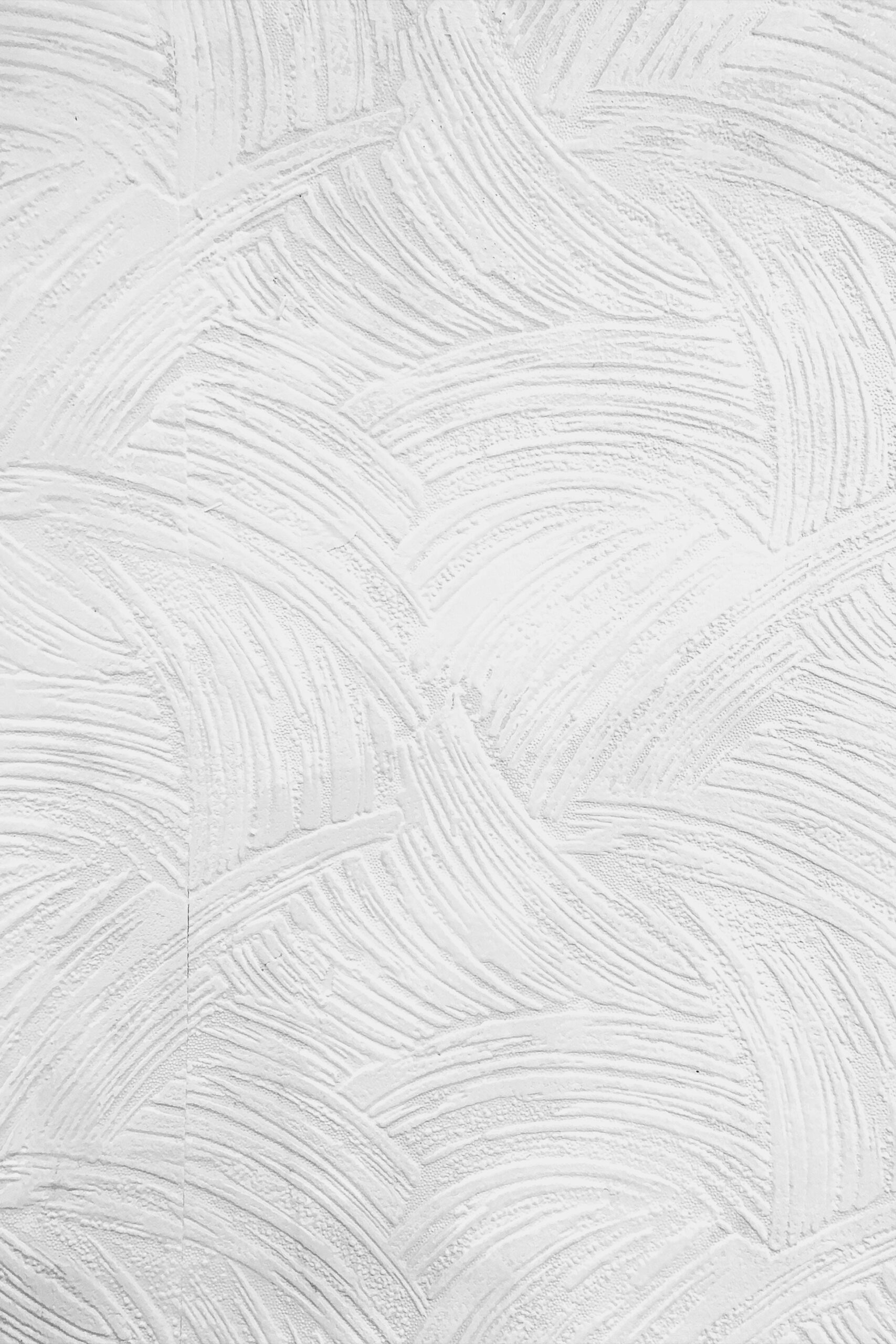
Pearls have long symbolized timeless sophistication — from Akoya pearls renowned for their mirror-like lustre to the opulent glow of South Sea and Tahitian pearls. Today, discerning buyers compare not only pearl earring sizes but also the quality, origin, and craftsmanship that distinguish saltwater pearls from freshwater varieties. Brands like Mikimoto have elevated pearl jewellery into an art form, producing coveted Mikimoto pearl necklaces and Akoya pearl earrings prized for their uniform brilliance.
Before choosing your ideal pearl stud size, it’s essential to understand how pearl type and formation affect diameter, nacre thickness, and shine. Our detailed guide on how to buy pearl jewellery explains what to look for when comparing South Sea, Tahitian, and Akoya pearls, including where to find the best place to buy pearls online or where to buy pearls in London.
In this article, you’ll explore how demand has shifted between large and small pearls, learn the standard size chart for different types, and discover which pearl earring sizes best complement your face shape — blending elegance, proportion, and quality for every style.
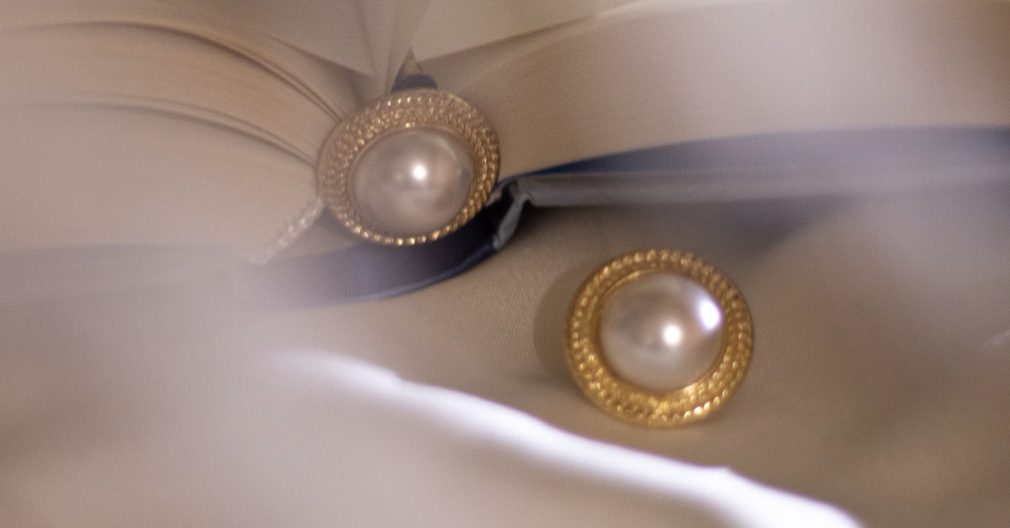
Section I: Evolution of Pearl Earring Sizes: From Grandeur to Accessibility
Throughout centuries, the popularity of different pearl sizes has evolved in tandem with changing aesthetics, technological advancements in pearl sourcing, and cultural dynamics. These changes have significantly influenced the pearl market by affecting the availability and cost of different pearl sizes.
Prestigious Large Pearls
Effect of large pearl earring sizes historically
Historically, royal courts of antiquity regarded larger pearls with great reverence.
During the height of the Byzantine Empire (330-1453 AD) and Parthian Empire in Persia (247 BC-224 AD), the size of pearls was a reflection of the ruler’s opulence and prestige. Traders and merchants sourced these pearls from the Persian Gulf, a significant source, and from China via trade routes like the Silk Road.
Then, skilled artisans and royal jewellers incorporated these large pearls into the opulent headpieces, state regalia, and royal thrones of the Byzantine and Parthian rulers as symbols of their wealth and prestige.
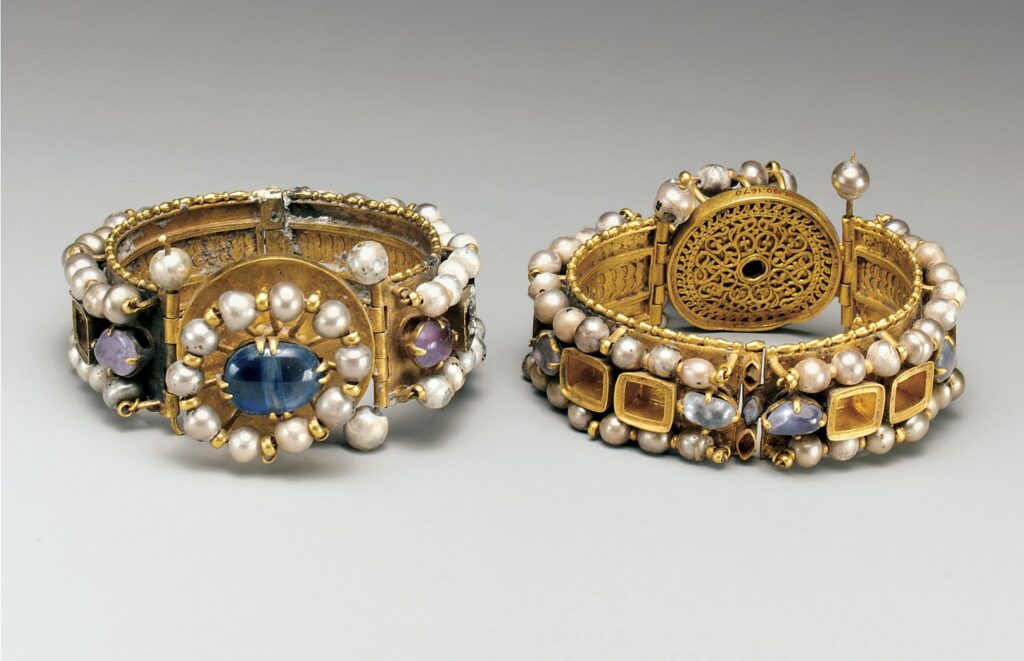
Pearl Frenzy – Overexploitation of large pearls
In the late 19th and 20th centuries, advancements in pearl cultivation methods and more efficient diving techniques improved accessibility to cultured pearls (particularly saltwater pearls). As a result, production became more efficient and widespread. As pearls became popular as fashion accessories and status symbols, their global demand surged. Pearls became much more available to a broader range of consumers.
However, this eventually led to the overharvesting of natural pearl oysters in localised areas. Their overexploitation to meet global demand severely depleted pearl stocks. Pearls grew scarce in supply, which significantly drove up pearl prices.
The Rise of Small Pearls
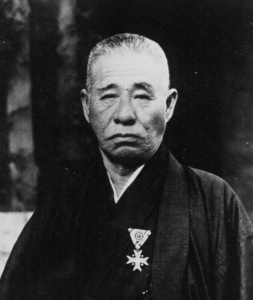
Due to overexploitation, the pearl industry shifted towards cultured pearls. Kokichi Mikimoto pioneered this shift in the early 20th century, providing a solution to the scarcity of natural pearls. (Kokichi later founded the Mikimoto Company, a luxury jeweller renowned for its high-quality Akoya pearls and exquisite jewelry craftsmanship.) These controlled processes enabled commercial-scale production, meeting growing demand. As pearl cultivation techniques evolved, the market diversified. Cultured pearls emerged of various sizes, shapes, and colours, catering to different tastes and budgets.
Smaller cultured pearls, like Akoya and freshwater pearls, democratised pearl jewelry. This offered more affordable options and reduced demand for large, scarce, and expensive pearls. Consequently, cultured pearls became the preferred choice, reshaping the market dynamics and relegating natural pearls to luxury rarities.
This marked a diverse and evolving approach to pearl size, and its incorporation into fashion and eventual contemporary jewelry design. Today, consumers perpetually desire smaller pearls due to their understated elegance and versatility, especially in classic styles of pearl jewelry.
Post-Modern Resurgence of Large Pearls and Chanel
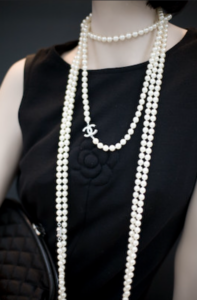
The mid-20th century and post-modern period saw a resurgence in the popularity of larger (albeit cultured) pearls. Bold, avant-garde creations showcased large pearls in bold, modern statement pieces.
In the 1980s, Chanel instigated the trend of incorporating large pearls into high-fashion collections under Karl Lagerfeld’s creative direction. Karl revitalised the classic Chanel aesthetic. He built on Coco Chanel’s legacy of breaking away from traditional fashion norms. She was known for blending custom and fine jewelry to create a relaxed yet elegant style.
Chanel’s pearl suppliers sourced high-quality cultured saltwater pearls from Japan, French Polynesia, Australia, and the Philippines. The suppliers worked closely with pearl farmers to select the finest Akoya and South Sea pearls. This ensured they met Chanel’s stringent quality standards.
Chanel’s innovative designs incorporated oversized pearl necklaces, bracelets, and other accessories. This served to create a striking, bold aesthetic that defied the traditional notion of pearls as dainty and reserved. The avant-garde designs garnered both acclaim and intrigue, ultimately reshaping the way pearls were incorporated into high fashion.

Section II: Exploring Pearl Sizes
The type of pearl, such as Akoya, South Sea, Tahitian, and freshwater pearls, significantly influences pearl earring sizes. Each pearl type has its own range for what is classified as small, medium, or large.
Notably, not all small pearls, for example, will exhibit a high lustre, depending on pearl type and quality.
Impact of Pearl Type on Pearl Earring Sizes
The following chart shows the relative size ranges for small, medium, and large pearls (measured in in millimeters) across different types of pearls.
| Pearl Type | Appearance | Small Size (mm) | Medium Size (mm) | Large Size (mm) |
| Akoya Pearls | 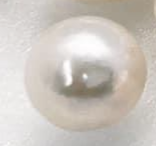 | 5-7 | 7-8.5 | 8.5 and above |
| Tahitian (Black) Pearls | 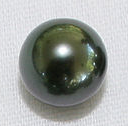 | 8-10 | 10-12 | 12 and above |
| Sea of Cortez Pearls | 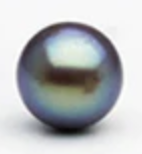 | 9-10 | 10-14 | 14 and above |
| South Sea Pearls (Golden and White varieties) | 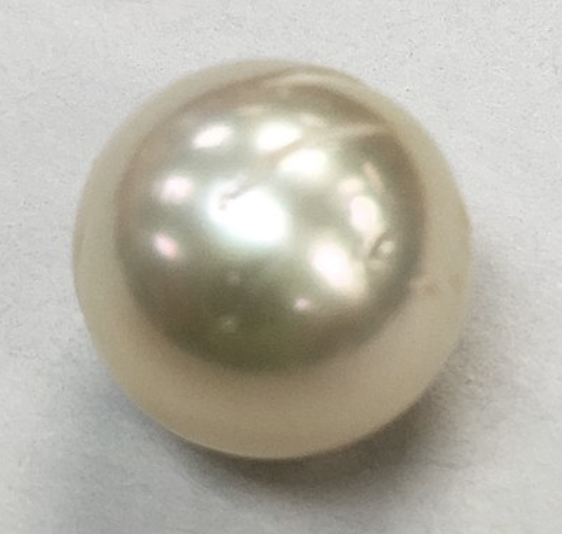 | 9-10 | 10-13 | 13 and above |
| Freshwater Pearls (Japanese and Chinese varieties) | 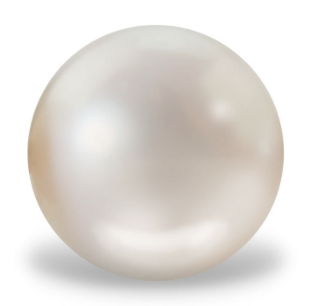 | 4-6 | 6-8 | 8 and above |
From this chart, it is evident that each pearl type varies significantly in size. The perception of small, medium, and large pearls is not consistent across all pearl types. The genetic traits of the oyster species and environmental conditions outlined below determine differences in pearl size.
For instance, Japanese Akoya pearls are small to medium in diameter. Meanwhile, the smallest Tahitian pearls and South Sea (Golden and White) pearls at 9-10mm exceed Akoya pearls’ small size range of 5-7mm. Freshwater pearls are the smallest type at 4-6mm in diameter.

Deepen your understanding of pearl types, their attributes, and how to assess pearl jewellery quality in the Guide to Buying Pearl Jewellery.
Pearl Earring Sizes: Akoya vs. South Sea vs. Freshwater Pearls
Understand the differences in the relativity across each size range to guide any purchase decision. In this way, you can obtain the best quality pearls for each size and achieve best value for money.
In this section, learn why pearl size increases across freshwater, Akoya, and South Sea pearls. Learn how genetic and environmental factors for type each affects their quality.
Effect of Genetics on Pearl Size
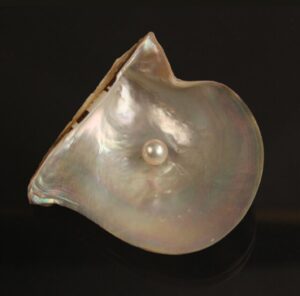
For instance, a small Akoya pearl will appear considerably smaller relative to a small South Sea pearl. The smaller Pinctada fucata oysters cultivate Akoya pearls, resulting in their smaller size.
Meanwhile, South Sea pearls originate from larger Pinctada maxima oysters known for yielding substantially larger pearls.
Effect of Environment on Pearl Size
Environmental variations contribute significantly to the size discrepancies observed between Akoya and South Sea pearls.
How Japan’s cool waters fostered small Akoya pearls
Akoya pearls are typically cultivated in the nutrient-rich and relatively cooler waters of Japan and China. Typically, cooler temperatures can slow metabolic rates. However, in Akoya pearl oysters (P. fucata), the moderate temperatures prevalent in these regions provide a favourable balance. This balance allows the oysters to maintain an active metabolism. It facilitates faster growth rates whilst offering a balance energy allocation toward both reproduction and pearl formation. The cooler water temperatures of Japan and China promote the formation of highly lustrous, yet small-sized Akoya pearls. The cooler temperatures slow down the growth rate of pearl layers. This allows for more compact and reflective nacre deposition that portray high lustre.
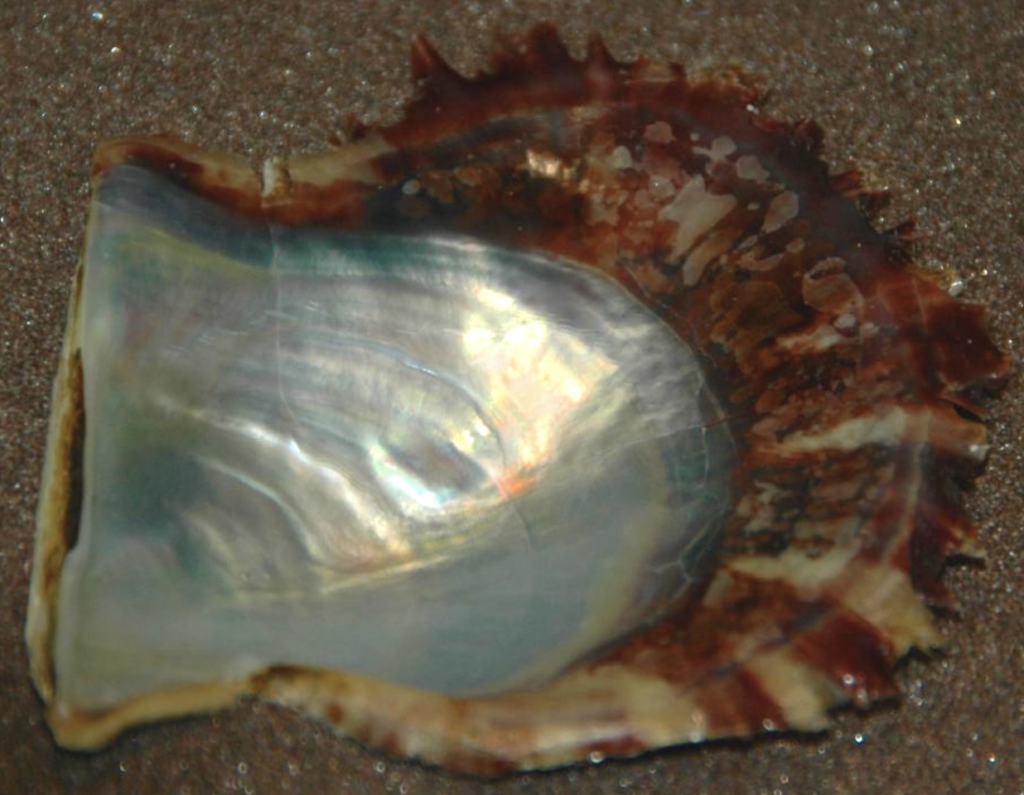
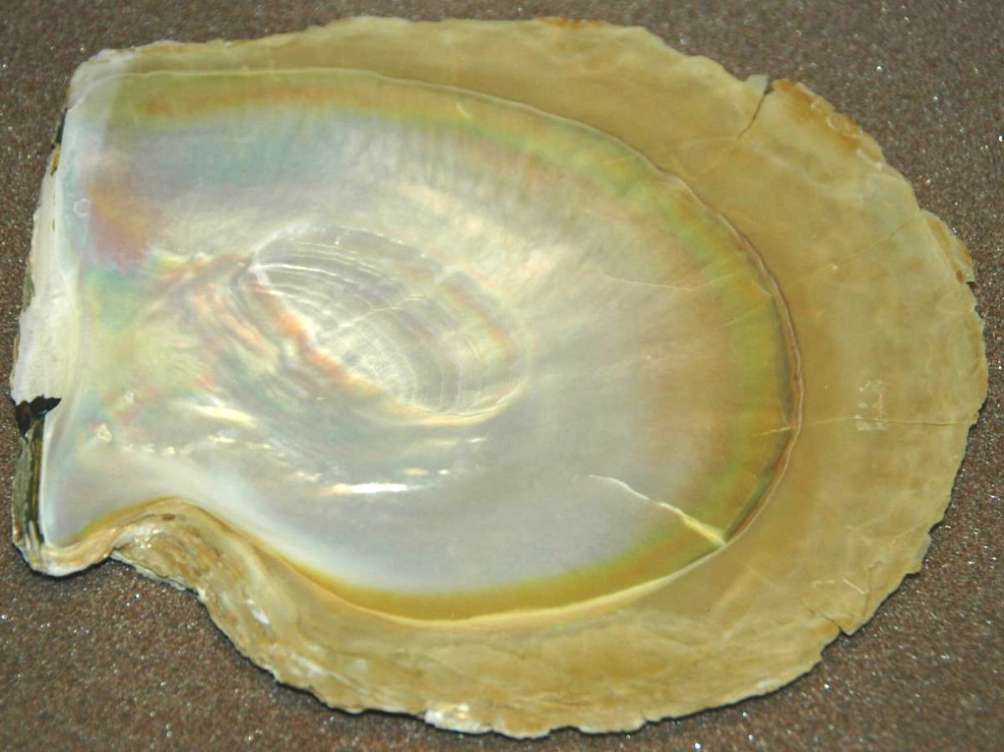
How warm environments accelerated growth of South Sea pearls
Conversely, South Sea pearls grow in the warmer and more expansive marine environments of Australia, Indonesia, and the Philippines. The pearls undergo more extended growth periods in these regions. The warmer temperatures accelerate metabolic processes, supporting the development of larger pearls with thicker nacre layers and a distinctively radiant lustre.
However, this comes at the cost of energy allocation. The environment’s optimal support for growth allows for the redirection of the oyster’s energy toward reproduction rather than pearl formation. Therefore, environmental conditions impact South Sea pearls to have greater size than Akoya pearls.
Why are freshwater pearl earring sizes the smallest?
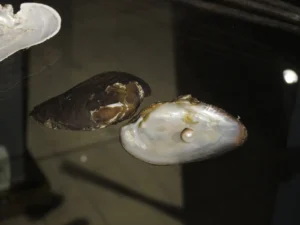
Freshwater environments like rivers and lakes feature cooler temperatures and nutrient-rich conditions. This supports relatively moderate metabolic rates in freshwater pearl mussels compared to their saltwater counterparts. This balance allows for both reproduction and pearl formation, although pearl growth is slower.
Consequently, freshwater pearls are typically smaller than larger saltwater pearl types. This is due to the higher metabolic rates in warmer saltwater environments. The slower metabolic rate in freshwater mussels also impacts the rate at which nacre is secreted and deposited around the nucleus. This can result in thinner, more fragile nacre layers and softer lustre compared to those formed by saltwater oysters.
Despite their smaller size, freshwater pearls are valued for their affordability and abundance. They are characterised by a unique sheen that distinguishes them from saltwater pearls.

Section III: Are Small, Medium or Large Pearl Earring Sizes Best for You?
In this section, we will explore how different pearl earring sizes can impact styles for various occasions, visual appeal and suitability for different face shapes.
Whether you are seeking understated elegance or statement pieces, understanding the interplay between pearl size and face shape will help you find the perfect pair of earrings to complement your style and enhance your natural beauty.
Small Pearls: Subtle Sophistication
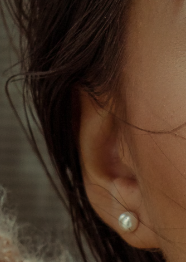
Small-sized pearls generally fall within the 4-7mm range in diameter. For petite women and young ladies, smaller pearls in the 4.0-6.0mm size range can be a delightful choice to complement a more delicate frame.
However, in spite of the occasion, small pearls are the right size to consider. Small pearls offer an exquisite choice for everyday wear. Their subtle presence aligns with the essence of true elegance, emphasising the art of understatement. These dainty gems provide a touch of sophistication without overwhelming the wearer.

Small Pearls’ Accessibility
It is important to recognise that smaller-sized pearls are more common in the gemstone market, regardless of the pearl type.
The cultured pearl industry has historically aimed to maximise production and efficiency. This has led to a preference for the cultivation of smaller pearls. These smaller pearls are more cost-effective than their larger counterparts due to production and timing costs. Therefore, their small size adheres to the market’s expectations in its response to pearl size demand in modern times.
AKOYA EXCELLENCE
The Redefined Feminine (TRF) recommends considering a pair of exquisite Akoya pearl earrings if you prefer smaller, more delicate pearls. TRF endorses Akoya pearls for their discreet small size of 5-7mm, harmonising with the art of elegant understatement.
Akoya pearls are revered for their impeccable roundness, mirror-like surfaces, and high lustre. These qualities stem from the genetic predisposition of P. fucata oysters to produce thick, lustrous nacre layers, combined with their efficient metabolic processes and optimal environmental conditions.
Specifically, the efficient arrangement of calcium carbonate crystals within the nacre layers optimally refract and reflect light to produce a mesmerising iridescence. The consistent nacre deposition and nucleation with small bead nuclei results in its smoother surface texture, enhancing their overall luminosity and visual appeal.
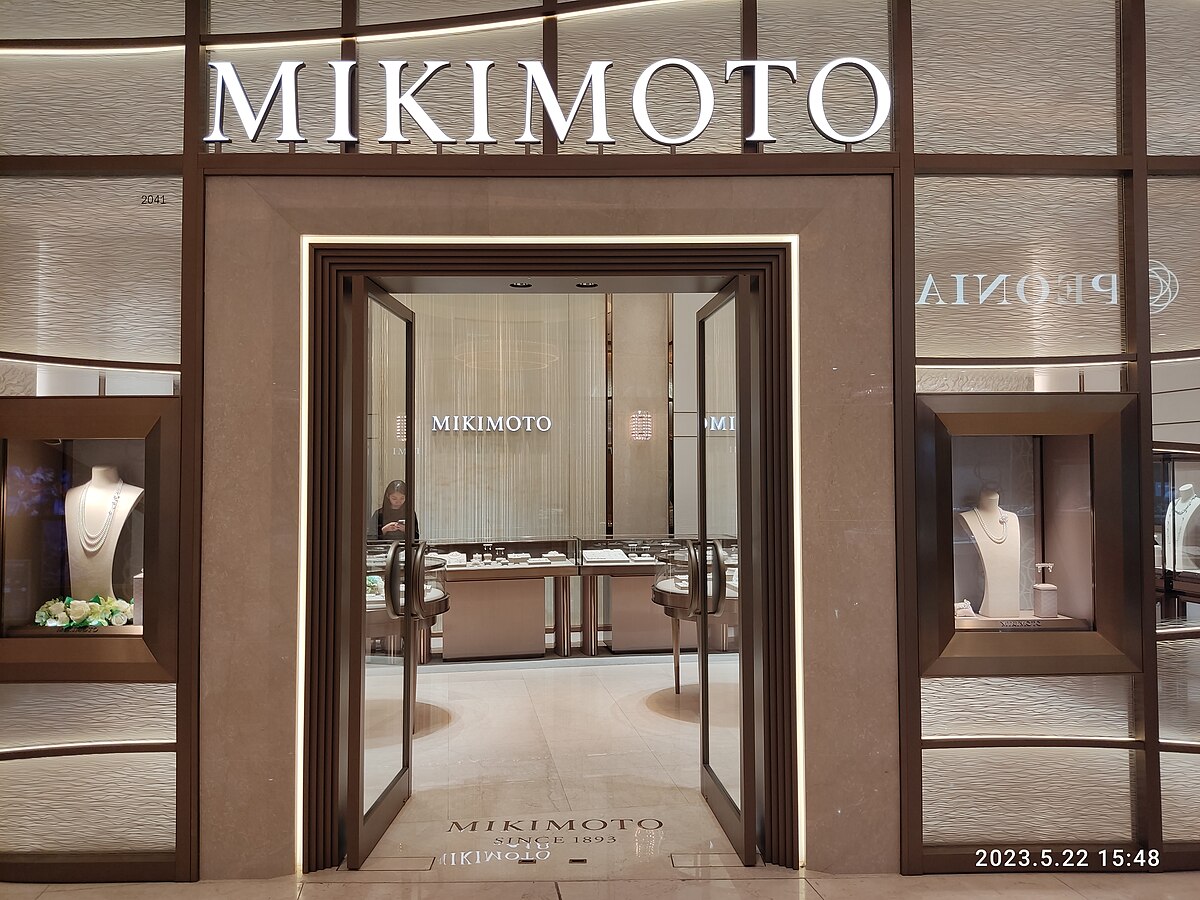
Mikimoto Company Akoya Pearls
Mikimoto Pearl Farm Alliances
For the pinnacle of luxury in Akoya pearls, Mikimoto holds a reputation for excellence. With a heritage spanning over a century, Mikimoto has established itself as a pioneer and leader in the world of pearl cultivation and jewelry craftsmanship. As abovementioned, Japanese entrepreneur Mikimoto Kōkichi founded Mikimoto in 1893, setting the standard for excellent pearl quality in jewellery design.
Mikimoto’s longstanding relationship with Japanese pearl farms underscores its commitment to sourcing only the finest Akoya pearls. This close relationship allows Mikimoto to have a direct influence on the cultivation process. Mikimoto pieces feature an identifiable 18-karat gold clasp and Mikimoto ‘M’ emblem, symbolising authenticity and craftsmanship.
The pearls, cultivated in Japan’s nutrient-rich waters, undergo meticulous selection to meet Mikimoto’s exacting standards for lustre, surface quality, and nacre thickness. The brand’s standards align with the rigorous criteria of the Japanese pearl grading system. Mikimoto offers a wide range of Akoya pearl grades. Each grade reflects specific attributes and quality levels as defined by these standards.
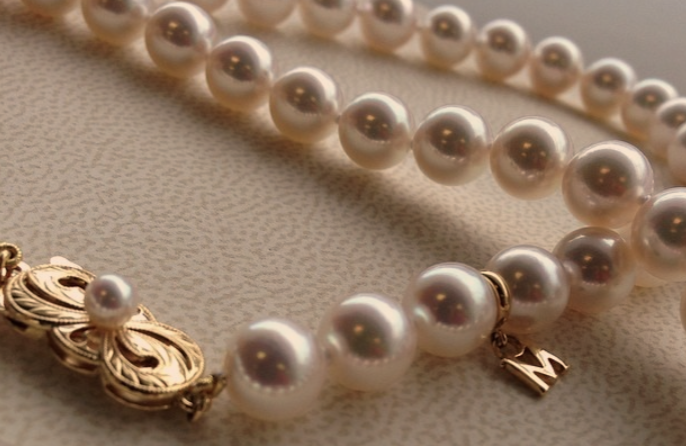
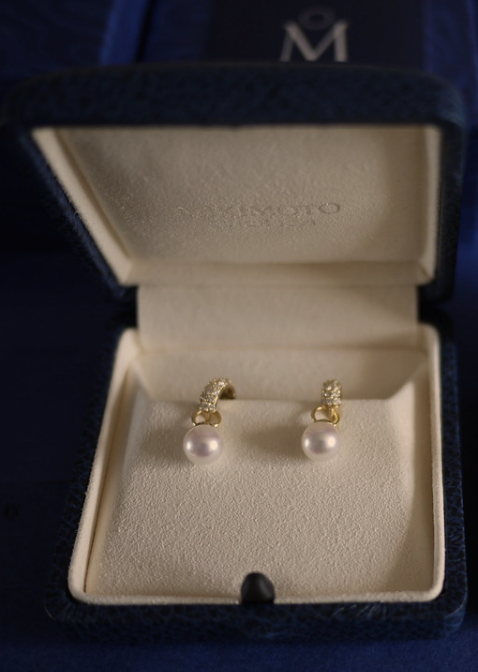
J.R. Dunn Jewellers offers a range of Mikimoto Akoya pearl earrings of different grades.
Consider J.R. Dunn Jewellers’ ‘Build Your Own Pearl Earrings’ online offering. This allows consumers to select a preferred metal (white-gold or yellow-gold), pearl size (from 6mm to 9.5mm), and pearl grade (from grade A, A+, AA and AAA).
Medium-Sized Pearls: Versatile Elegance
In the 7.0-8.0mm size range, you will find medium-sized pearls that strike a perfect balance between subtlety and prominence. Women of all ages can comfortably wear these versatile pearls. They strike a balance whereby medium-sizes pearl are an impeccable choice for everyday wear, yet equally adorn formal occasions with refined grace.
People often consider medium-sized pearls as the “sweet spot” in pearl earring sizes. They strike a perfect balance, steering clear of both excessive modesty and ostentation. A safe and classic choice, medium-sized pearls complement a wide spectrum of personal styles and face shapes. If you are unsure about the right pearl size, you can hardly go wrong with pearls in this range.
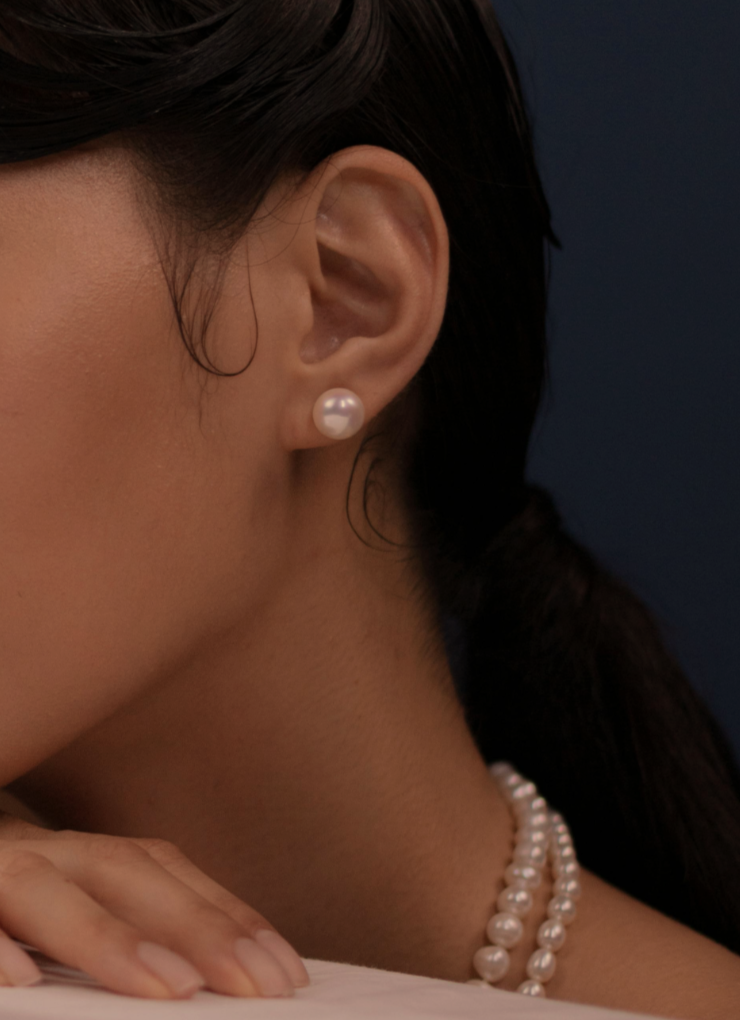

Medium Pearls Price Premiums
Medium to larger pearls often carry higher price tags. These price premiums reflect the additional resources required for the pearls’ extended cultivation process. This involves careful management of water quality, temperature, and nourishment, contributing to their elevated value.
Market demand and rarity also drive up the prices of medium to large pearls. For instance, the golden South Sea pearl, a rare variety, commands a 40% price premium over its white counterparts, owing to its scarcity and exceptional beauty.

Large Pearls: Making a Statement
Large pearls typically exceed 12mm. They predominantly belong to the realm of saltwater pearls such as South Sea, Tahitian, and Sea of Cortez pearls. Beyond their size, these pearls showcase exceptional lustre, smooth surface, and unique overtones, contributing to their luxurious appearance and desirability. These pearls demand attention and exude an air of confidence and sophistication.
Look for large pearl earrings sizes if you are seeking a statement piece that leaves a lasting impression, particularly at special events or formal occasions. Large pearl stud earrings command attention and make a bold statement.
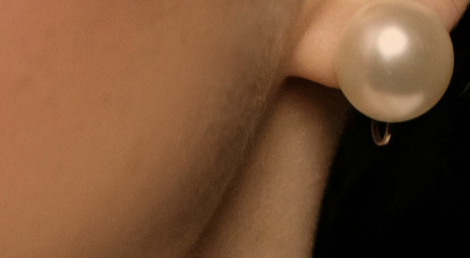
MATCH YOUR PEARL SIZE TO YOUR PROPORTIONS
The choice of pearl size can be a valuable tool in achieving visual balance and symmetry in personal fashion and appearance. For example, large pearls are an excellent choice for individuals with larger earlobes as they provide a balanced and harmonious visual effect.
Furthermore, for tall individuals, large pearl earrings can serve to anchor and enhance their stature elegantly. Conversely, should a petite person choose to wear large pearl earrings, the visual impact may appear overwhelming, proportion wise.
However, incorporating large pearls can successfully draw attention to your facial features. They can beautifully enhance your overall look and add a touch of glamour to your attire, if this aligns with your personal style.
Baroque and Drop Earrings
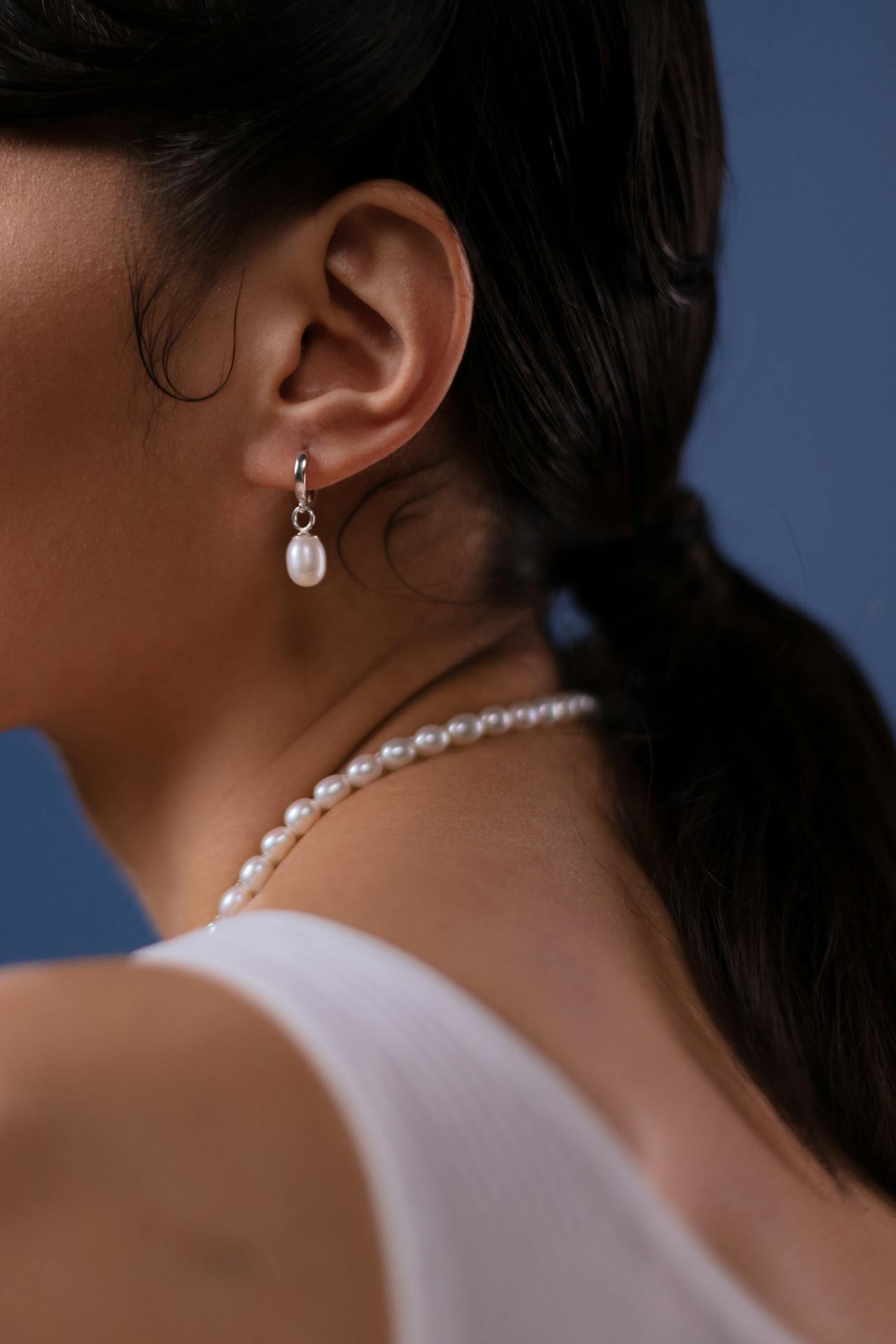
Drop pearl earrings
Drop pearl earrings feature a single pearl suspended from a wire or a chain. They draw inspiration from various pearl types and sizes, including baroque pearls. Baroque pearl have irregular, non-spherical shapes due to non-uniform nacre deposition around an irritant in a mollusk.
Drop Pearls: The Influence of Queen Victoria
Drop pearl earrings’ popularity surged during the Baroque period in the 17th and 18th centuries. Influenced by Queen Victoria during the Victorian era, these earrings often featured intricate metalwork with motifs. The motifs were inspired by nature or love to reflect the opulence of the period.
Originally gifted to Queen Victoria by her husband, Prince Albert, in 1847, the pearl and diamond earrings became cherished heirlooms of the crown. After Victoria’s passing, the earrings passed from monarch to monarch. Queen Elizabeth II inherited them in 1952, wearing them for significant formal occasions throughout her reign.
Today, drop earrings feature both round pearls for a classic, timeless appearance, and baroque pearls, with their uniqueness and distinct character. Drop down designs feature different types of pearls, including Akoya, freshwater, South Sea, and Tahitian pearls.
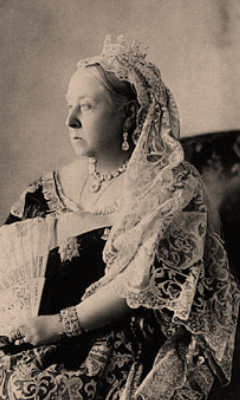
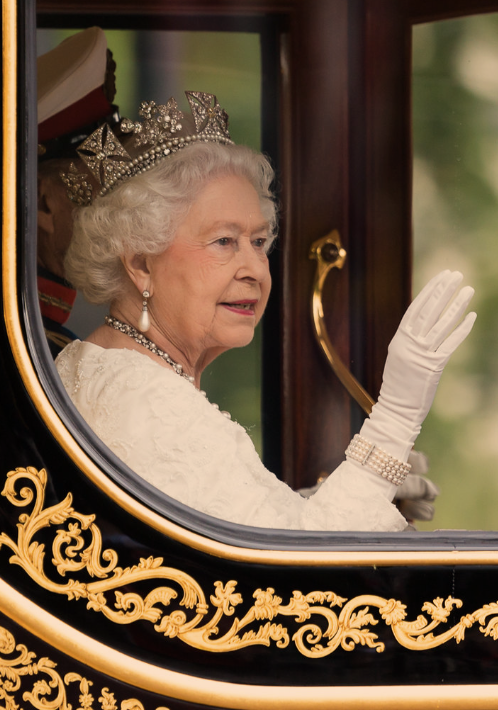
DROP PEARL EARRING SIZES
| Pearl Design | Small Size Range | Medium Size Range | Large Size Range |
| Drop round pearl earrings | 6-7mm | 7-9mm | 9mm and above |
| Drop baroque pearl earrings | 6-7mm | 8-10mm | 10mm and above |
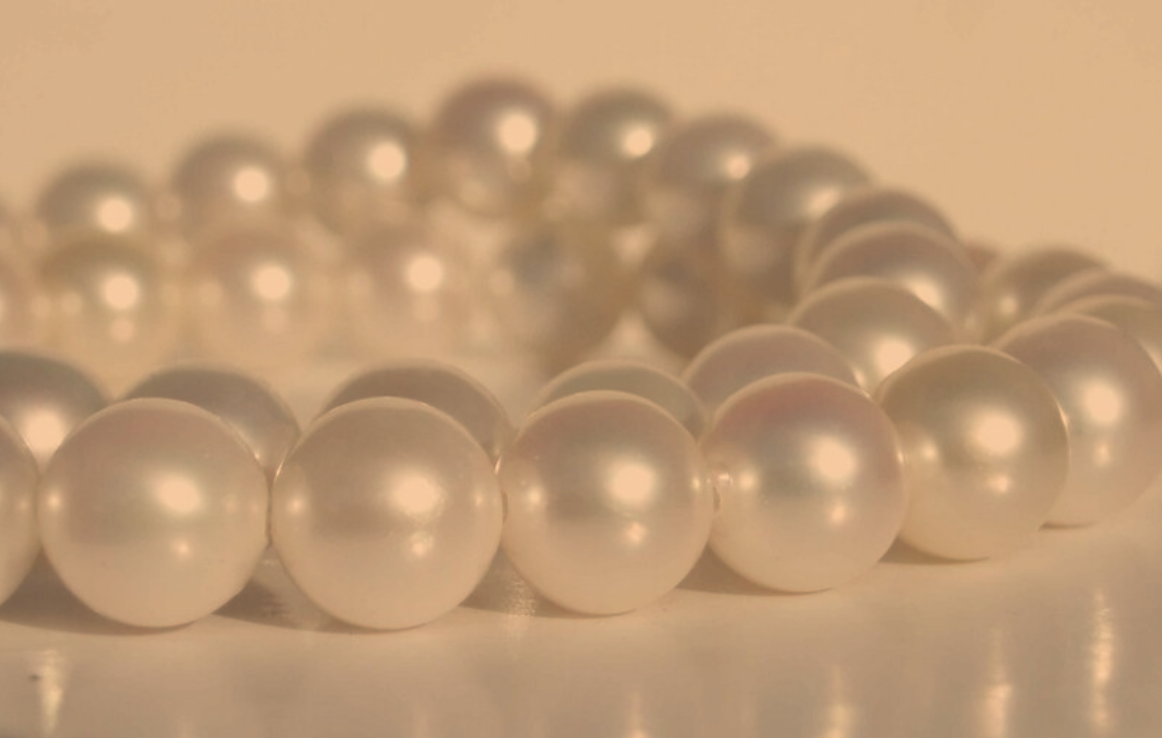
Sourcing Trusted Retailers
Over the centuries, drop pearl earrings have become increasingly accessible and affordable. This is due to advancements in pearl cultivation and jewelry manufacturing. Notably, a significant proportion of pearls in the market today are of lower grade, including those used in drop earrings. This has led to variations in pearl quality, such as lower lustre, surface irregularities, or shape imperfections.
To ensure the highest quality pair of drop pearl earrings (or any pearl earrings) within one’s budget, seek certified jewellers or trusted retailers, such as Mikimoto, Yoko London, or Jewelmer. Prioritise pearls of consistent high lustre, shape, and surface quality for overall craftsmanship and quality to maximise your return on investment.
Choosing the Right Pearl Earring Sizes for Your Face Shape
Your face shape can also influence the ideal pearl size for you. Find some guidelines below to help you make the right choice.
Round Face

If you have a round face, consider pearls with elongated shapes, such as oval or teardrop, to create a more balanced look.
Heart-Shaped Face

Women with heart-shaped faces can opt for pearls with a slightly wider diameter, such as medium-sized pearls, to complement their facial features.
Oval or Long Face

Pearls in various shapes, including round, button, or oval, can work beautifully for those with oval or long faces. Experiment with different styles to find your perfect match.
The Definitive Answer to Pearl Earring Sizes
While there is no one-size-fits-all answer to the question of the perfect pearl earring size amongst the vast range of options. However, the key is to consider your individual style, facial features, budget constraints and the occasion. Classic pearls in the 7.0-8.0mm size range often emerge as the best choice for their versatility and timeless elegance.
Pearl stud earrings are also the perfect gift choice for a special person as a classic piece of jewelry that transcends trends and holds timeless appeal. Tailor pearl size to the recipient’s style and preferences, making it a thoughtful and refined gift.
Whether you are celebrating a new bride, honouring a special occasion, or simply expressing your appreciation for a loved one, pearl stud earrings are a symbol of love and sophistication.
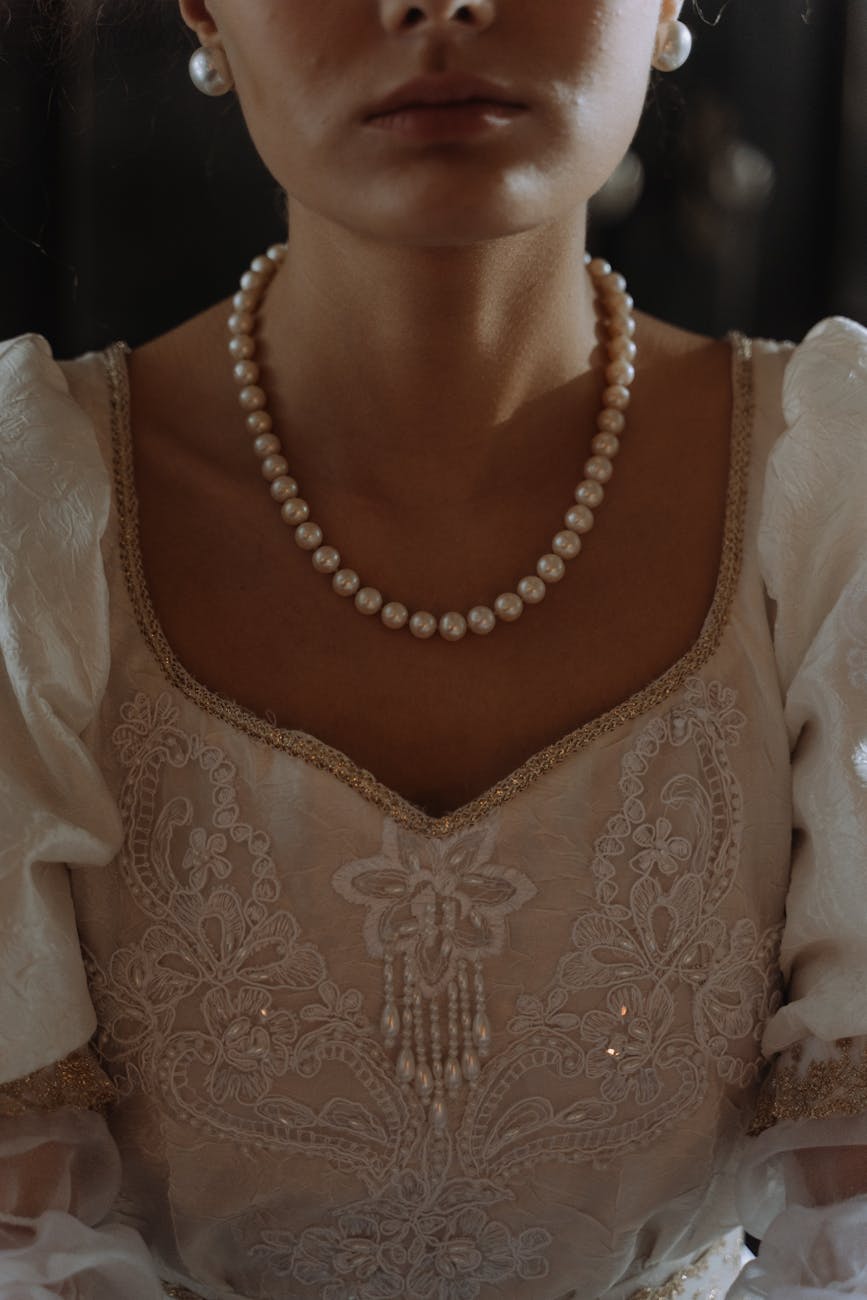
In your pursuit of the perfect pearl stud earrings, remember that the right size is not merely about aesthetics; these timeless gems, sourced from a trusted jeweller, should also make you feel confident and elegant.
Explore our guide linked below How to Be an Elegant Woman. Discover how your pearl accessories, regardless of pearl earring sizes, can enhance your sophisticated image and elevate your dress sense.
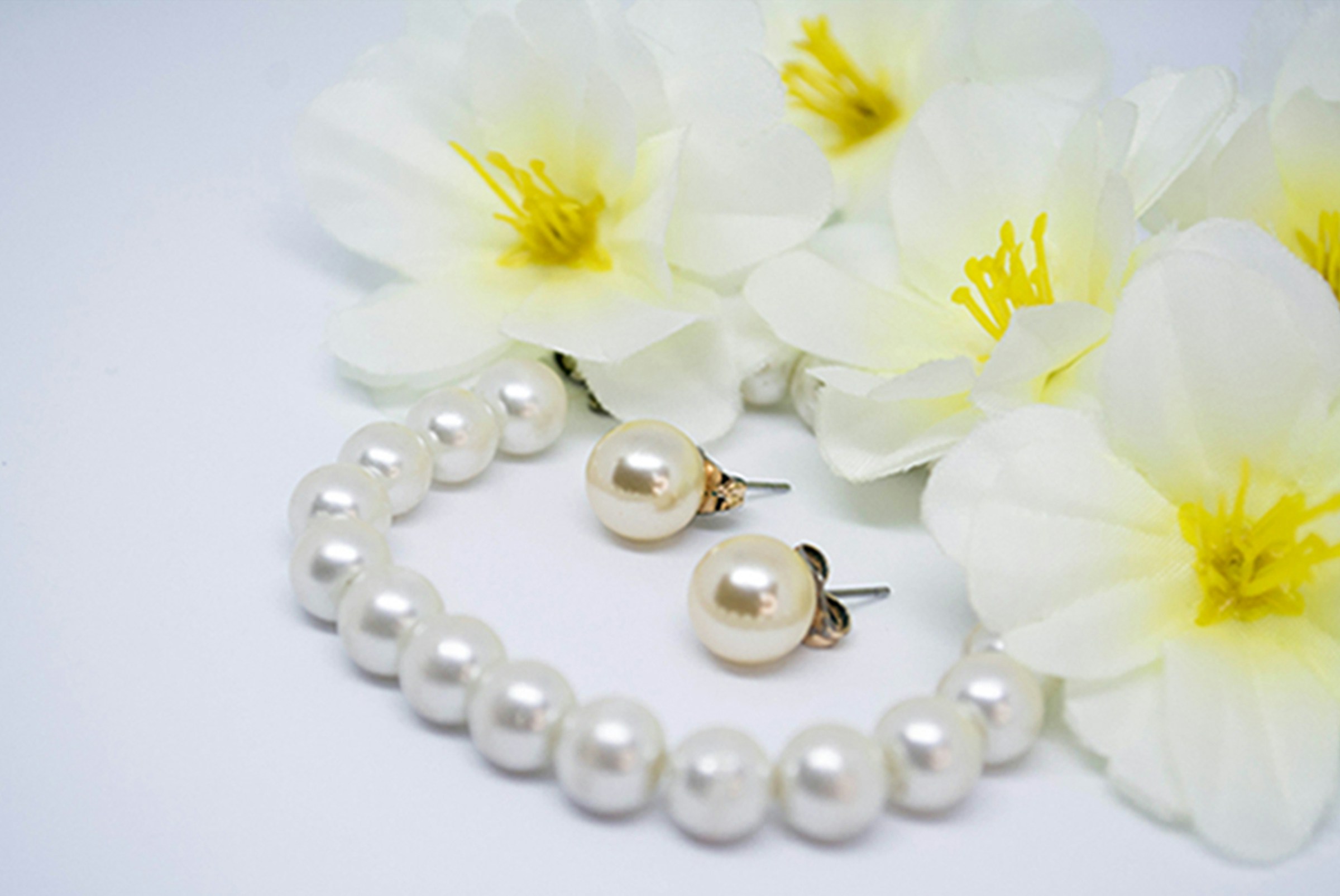
Leave A Comment